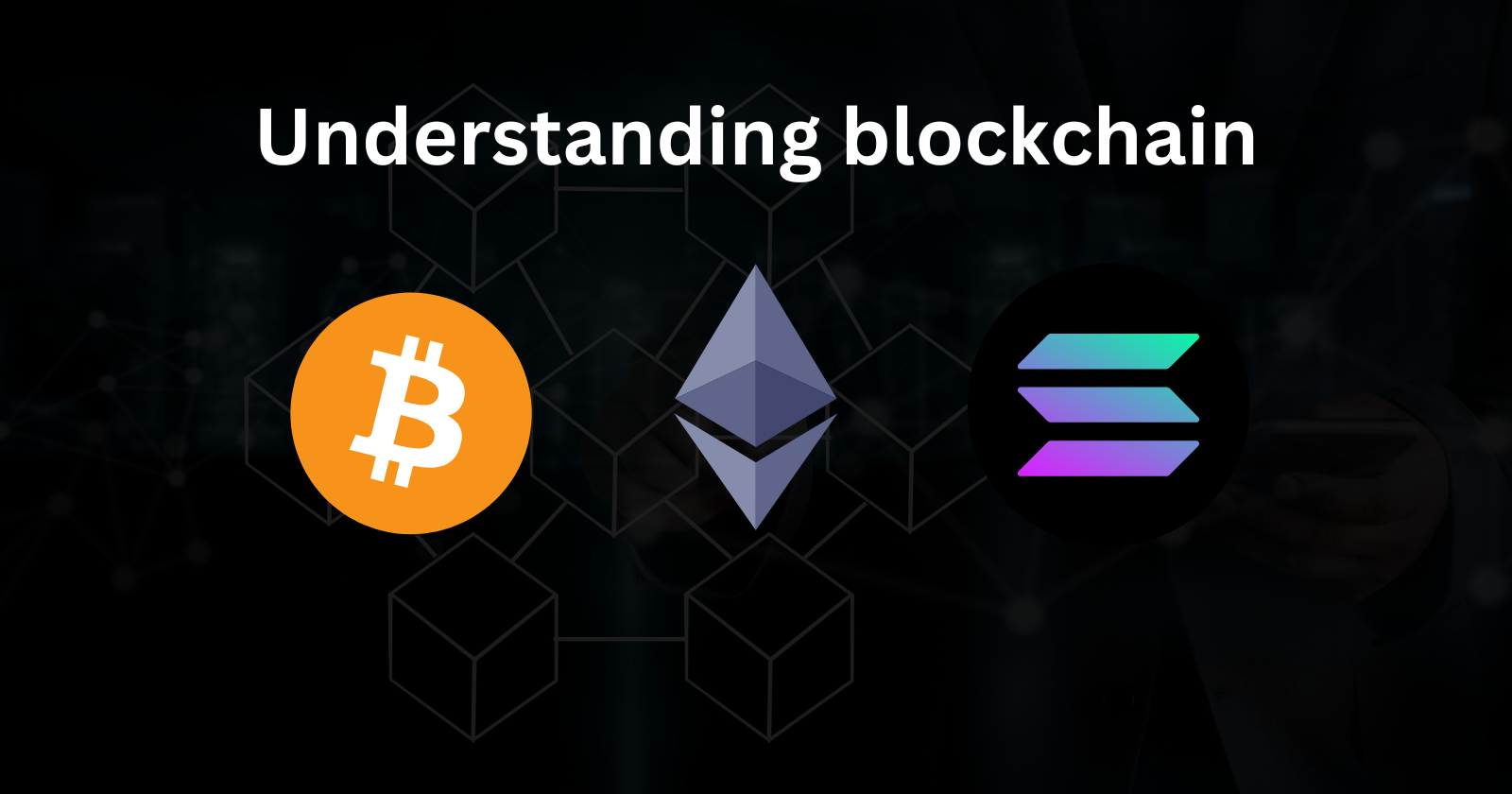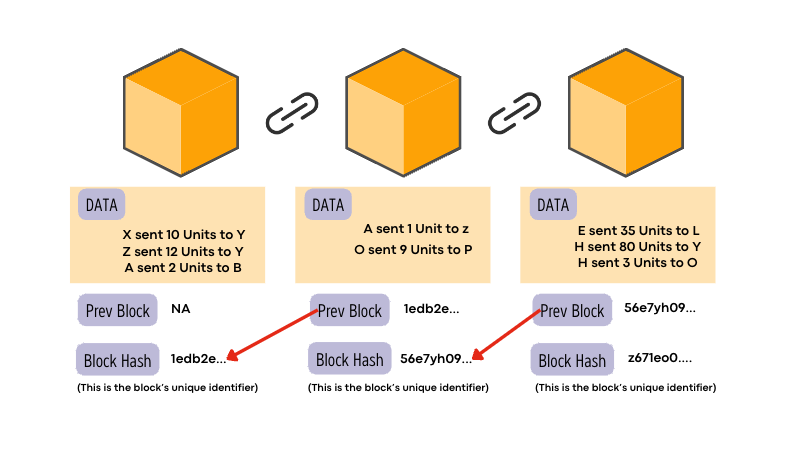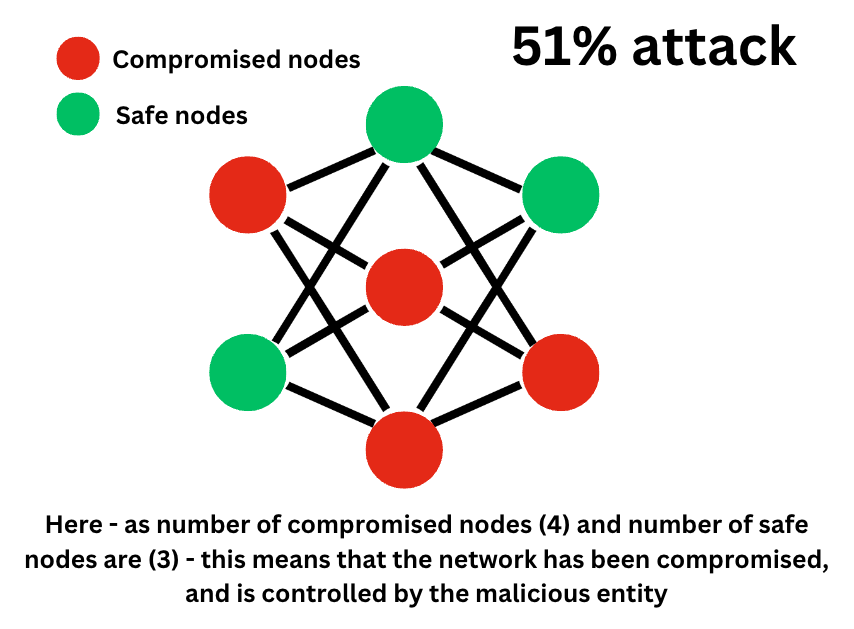Understanding Blockchain - My Journey with Web3 - Part 2
 Yuvraj Singh
Yuvraj Singh
For those who are new here, I am an experienced Software Developer (Backend Engineer) who has decided to pick up and explore a new tech domain, and for this, I have chosen Web3.
Read along as I stumble through this exciting new domain as a beginner and student, familiarizing myself with the various nitty-gritty of this domain and my thoughts and confusions surrounding the field.
In this article, I explore blockchain - the very technology that makes Web3 a reality!
What is blockchain?
As the name suggests - blockchain is nothing but a bunch of blocks connected together to form a chain - with just a bit of rules, that’s all!
Each block is linked to the previous one, forming a "chain". Assume each block has a unique ID. The next block, will contain some data, along with id of the block that comes before it.

Although blocks can store any kind of data, they commonly store transaction information in financial applications.
Why does this help?
To understand how blockchain adds value, let’s consider a simple example. Tony wants to send $50 to Steve. How would he normally do that?
Typically, Tony would go online and request that his bank transfer the amount to Steve’s account. Here, the bank becomes the central authority, validating Tony’s balance and authorizing the transfer. This setup centralizes decision-making power within the bank, which acts as the single source of truth. While this system may work for many people, some see it as problematic due to its centralization and potential for single points of failure. Blockchain explores the possibility of making such transactions without relying on a central authority, instead decentralizing the process to enhance trust in the system
Now, let’s see how this transaction plays out on a blockchain.
When Tony wants to send $50 to Steve, his transaction is shared with the blockchain network. In a decentralized setup, 'nodes'—other users on the blockchain—validate the transaction, effectively taking the bank’s place in verifying Tony’s balance. If Tony truly has $50, the nodes will approve the transaction, and a record of it is added to a new block on the blockchain. However, the block isn’t actually written to the chain until it’s approved by the network. Once added, the block is immutable, meaning it cannot be edited or removed.
The obvious and most common question that comes up, is that -
“What if Tony tries to cheat by claiming he has $100 instead of $50?”
In a traditional banking system, the bank would block this attempt—unless, theoretically, Tony managed to hack the bank, making it a single point of vulnerability.
With blockchain, however, any false claim by Tony is quickly identified and rejected by other nodes in the network, as they all have access to the full transaction history. If most nodes reject Tony’s claim, his transaction cannot proceed.
But… what if Tony hacks the majority of the network? Tony would have to control over half the network—a so-called “51% attack”—which is practically impossible in an established blockchain with millions of nodes.

In this way, blockchain introduces a new, decentralized method of trust, where everyone is treated equally, and malicious behavior is almost impossible. This decentralization and transparency make blockchain a powerful tool for secure, peer-to-peer transactions without relying on a central authority.
Benefits of blockchain
The introduction of blockchain technology provides not only a decentralized trust mechanism but also a range of additional benefits, including:
Transparency
As all the transaction data is publicly accessible to everyone, the scope for acting maliciously is eliminated.
Immutable
Once a block is written to the blockchain, it is impossible to change the block. How? This is done by using cryptographic hashing of the entire blocks content. Change a small value in the block’s data - and the entire identity (block’s hash) of the block changes completely - breaking the block’s chain and exposing the tampering attempt
Anonymous
As the transactions between parties are shown using a person’s wallet address, no personal information is given out, enhancing the privacy of individuals.
Digital ownership of assets
As the ENTIRE blockchain is immutable, the “chain of custody” and ownership can easily be traced, and falsifying claims of assets is just not possible.
My Personal thoughts
The entire concept of digital ownership — and the idea that value is rooted in collective belief — gives me a very new perspective on how value can be notional. An asset's value is completely based on what the majority perceives it as. If you think about it, "traditional money" is nothing but a piece of paper, and all its value is based on the trust in the issuing authority—the government.
Similarly, today, 1 BTC is worth $80,000 🚀. Yet, at its core, it’s just a piece of code that we’ve collectively agreed has value.
It's very exciting to see how humans have evolved from bartering goods to making real-world transactions with "digital assets"!
Looking forward to learning more!
Subscribe to my newsletter
Read articles from Yuvraj Singh directly inside your inbox. Subscribe to the newsletter, and don't miss out.
Written by

Yuvraj Singh
Yuvraj Singh
A Software developer with a passion for building products that users love, with a passion for exploring different technology spaces! Currently exploring: Web3